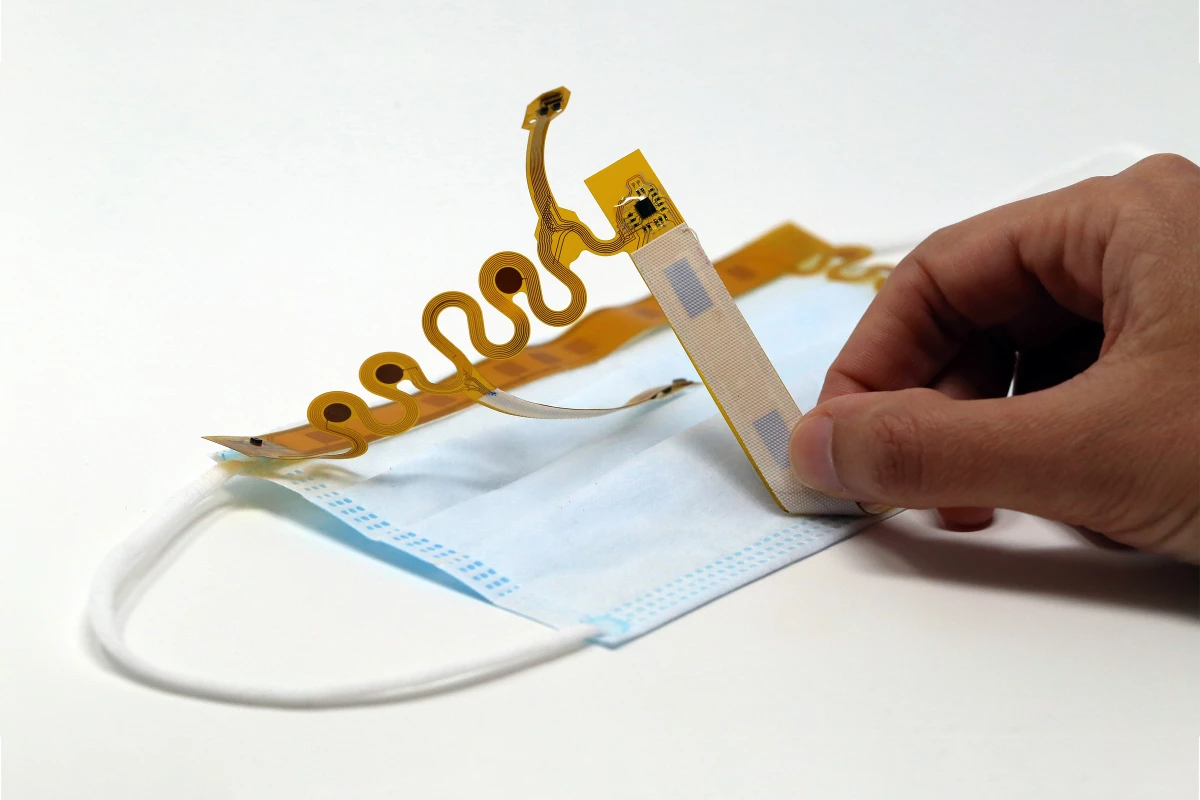While it's still important to wear a face mask in many situations, that mask won't be fully effective if it doesn't fit properly. That's why a team at MIT has designed a device to assess how well a mask fits an individual user, quickly and easily.
Known as cMaSK (conformable multimodal sensor face mask), the tool was designed to be a less expensive, more accessible alternative to the mask fit testing machines that are typically only found in facilities such as hospitals. The latter evaluate mask fit by comparing the concentration of airborne particles inside and outside of the mask in question.
cMaSK takes a different approach.
It's basically a flexible rectangular frame made of a biocompatible polymer called polyimide, which is temporarily adhered along the inside edges of a mask. Embedded within that polymer are 17 capacitive sensors, two temperature/humidity sensors, and one air pressure sensor. The device also incorporates an accelerometer and a Bluetooth module.

When the user initially puts the mask on their face, the capacitive sensors detect which parts of the frame (and thus the mask) are making contact with the skin, and which parts aren't – for an ideal seal, they should pretty much all be touching the skin.
The temperature, humidity and pressure sensors, meanwhile, detect user activities such as speaking and coughing – the accelerometer detects body movements such as walking and running.
All the information is transmitted via Bluetooth to an app running on a mobile device, which in turn accesses a server to analyze the data utilizing a machine-learning algorithm. The app then tells the user how well the mask fits, and how the different activities and movements affect that fit.
When cMaSK was tested on five men and five women, its fit data was found to correspond closely to data that was manually gathered by trained personnel from MIT’s Environment, Health, and Safety Office. It should be noted that overall, the tested masks were found to fit the men better than the women.
It is now hoped that the technology could be used not only to help people select reusable masks that fit them well, but also to guide manufacturers in designing better-fitting masks.
A paper on the research – which was led by Canan Dagdeviren, Siqi Zheng, Tolga Durak and Jin-Hoon Kim – was recently published in the journal Nature Electronics. cMaSK is demonstrated in the video below.
Source: MIT




